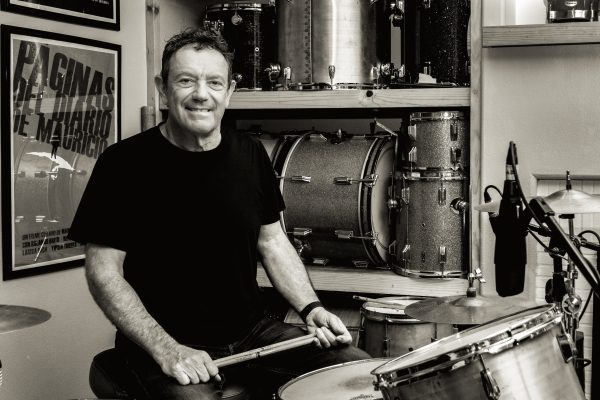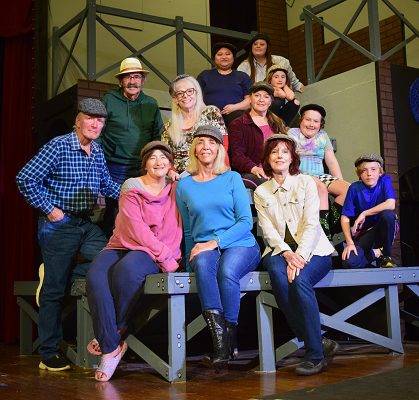
by William Foss
Have you ever seen something you never knew existed, and decided you needed it immediately? That’s what happened to Daniel Teruya, and it led to a new career.
Teruya worked at Boeing in Torrance, and had gone out with friends for dinner in Long Beach. Next to the restaurant was a business that sold brewing supplies, and there was a beer brewing kit in the window. One thing led to another: Teruya became a brewer, and then when he saw a brewing supply in Torrance he walked into that door also. Now he is the proprietor and co-owner of South Bay Brewing Supply, in Old Torrance.
When asked why he makes beer, and chose this rather unusual way of making a living, he simply says, “It’s all about the beer. You can make it the way that you like, share it with friends, and be proud of what you have made. What’s more, you know what’s in it and know that it hasn’t been sitting on a shelf for months. Beer tastes much better when it’s fresh.”
But what is beer, and where did it come from? Beer is any drink fermented from grain; the grain may be wheat, barley, rye and even rice – while many restaurant drink menus describe sake as “rice wine,” it is actually rice beer. Barley is the most common ingredient in European beers, but many northern European beers are made from wheat, such as the popular German style called Hefeweisen. Often there is a different blend of grains, with African beers containing sorghum and millet. A key ingredient of any beer is yeast, which converts the sugars in the grain to alcohol and carbonation.
As for where it came from, there is a great history behind this drink. It is older than wine, perhaps even older than bread. Analysis of Iranian pottery indicates that beer was being made there in 6000 BC. In the Sumerian Epic of Gilgamesh of 2100 BC a “wild man” is recorded to have “drank seven pitchers of beer, and his heart grew light, his face glowed and he sang out with joy.” After seven pitchers of beer we can only speculate as to what his singing sounded like. The oldest documented recipe in existence is from 1800 BC, from the temple of the beer-goddess Ninkasi in the Mesopotamian city of Ur. The instructions are so complicated that it is obvious that they had been making the stuff for a very long time.
The Egyptians also loved beer, and Pharaoh even collected taxes in beer – and paid the laborers who built the Pyramids in beer as well. Inscriptions indicate that each worker received about a gallon per day, an amount not recommended for modern construction workers.
It has been the drink of kings; Emperor Charlemagne is said to have had his own recipe that he demanded be followed by his brewers. Shakespeare loved beer and had a character who praised the drink so much that a brand was named after him: Falstaff. Queen Elizabeth started every morning with a quart of strong beer, but court documents record that her servants were limited to a pint of small beer until after noon. Kaiser Wilhelm said, “Give me a woman who truly loves beer and I will conquer the world.” Apparently in all of Germany he couldn’t find one, and therefore did not conquer the world.
In ancient times brewing was women’s work. All of the beer deities were women, and some traditions held that if a man made beer that it would go sour. Teruya does not agree with that part, but acknowledges that women are making a comeback in the field.
“More and more women like good beer and are making it at home,” he said. “We are getting many women coming up with really innovative recipes and flavors; they can be much more adventurous than men sometimes.”
“There’s a big difference in sharing a beer that you made rather than a beer that you bought.”
Why do people take up home brewing?
“People can express themselves in making beer like they can from cooking a fine meal, and make what they love,” Teruya said. “There’s a big difference in sharing a beer that you made rather than a beer that you bought. And there’s just craftsmanship, the joy of making.”
Teruya and his staff help their customers with recipes; come in and tell them what you like, and they will tell you how to make it.
“People put all kinds of things in beer and make great beer – cinnamon, spices, fruit, chili peppers, you name it and someone has made a beer with it,” he said.
You can also tailor the alcohol level to your taste – a mild session ale might only have 4 percent alcohol, while a barley wine might have as much as 15 percent alcohol. Commercial versions of these from Europe are generally sold in retail stores in small bottles, and with good reason. If you like you can also go low-calorie or gluten-free.
There are always at least 30 different recipes readily available, as well as the ingredients in the shop to make them. With a moment at his computer he can
pull up 200 more. Also available are over 30 kinds of hops and at least 20 yeast strains; these are used to add specific flavors and characteristics to a brew. “Pick what you like, and I will tell you how to make it,” Teruya said. “That’s what I am here for.”
A starter kit that includes everything that a newcomer might need only costs about $100, including the supplies for the first batch of beer. From there on, the costs are minimal – ranging from about $30 for the ingredients to make two cases of English Ale and more if you wish to craft an India Pale Ale with more expensive hops and more malt syrup. Using malt syrup is a shortcut that speeds up the process; the shop also has natural grain for those who want to do things the old-fashioned way, which takes longer (and leads to more of a mess in the kitchen). Some people like to put it in bottles, others in kegs.
Technically some beers are lagers and some are ales; the difference is how the yeast ferments and at what temperature. For the home brewer, the fermentation may need to take place in your cool garage rather than your warm living room to get the best results from some recipes.
The explosion in microbrews at the liquor store and craft breweries is not competition for his store, Teruya said, but a stimulant to the creativity of his customers.
“If they try something new, they will probably want to make it for themselves,” he said.
The shop sponsors a brewing club called the Strand Brewers Club, whose approximately 70 members meet to share conversation, samples and recipes. They also enter contests, and some of them take classes to become beer judges.
South Bay Brewing Supply also has some winemaking and cheesemaking kits, for those who wish adventures beyond beer. However, the majority of his inventory and interest is focused on his core product. As Teruya says, “It’s all about the beer.”
South Bay Brewing Supply is located at 1311 Post Avenue in Torrance. The phone number is (310) 328-2133. They are closed on Monday and open 12-6 p.m. on Tuesday through Friday, Saturday 10 a.m. to 4 p.m. and Sundays from 1 to 3 p.m. The website is www.southbaybrewing.com and Teruya can be reached at brew@southbaybrewing.com.











